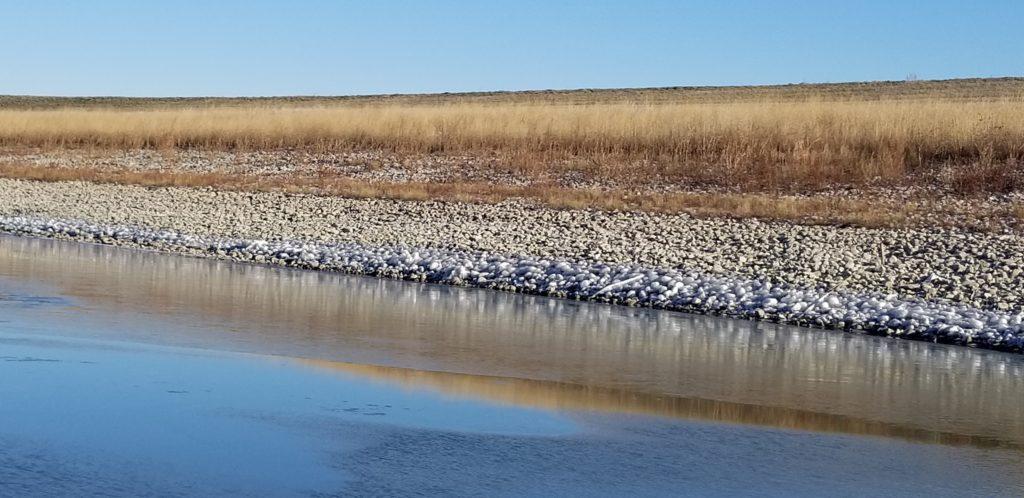

RIVERDALE – The water level in Lake Sakakawea mirrors the drought conditions present throughout the Missouri River Basin this year. Another season of below average runoff in 2022 could exasperate the situation even further.
In many places along the state’s largest body of water, vast expanses of mud flats have emerged where water enthusiasts formerly congregated. Favorite fishing spots have given way to dry land. Some boat ramps no longer reach the water. Others are getting close to being out of service.
According to North Dakota State Parks, the de Trobriand Marina at Fort Stevenson State Park has a “functional elevation range from 1,828 feet to 1,854 feet.” The park’s newer Garrison Bay Marina has a boat ramp that reaches down to 1,790 feet. Thursday Lake Sakakawea stood at 1,829.6 feet, nearly 10 feet less than its summertime peak.
The December lake level forecast issued by the U.S. Army Corps of Engineers this week projects Sakakawea to fall to 1,827.2 feet by February 28, 2022. The total yearly runoff into the Missouri River Basin for 2021 is now expected to be 15.0-million-acre feet. That compares to the long-term average of 25.8 maf.
"It could be a turning point next year."
Dave Fryda, North Dakota Game and Fish Department
“Things are still pretty good,” said Dave Fryda, North Dakota Game and Fish Department Missouri River System supervisor in Riverdale. “It could be a turning point next year.”
Fryda said another year or two of low or declining water levels could affect the condition of fish and forage in the reservoir. He added that, “A year or two of low water isn’t all bad. We’ll have some shoreline vegetation regrowing.”
Once the water rises, shoreline vegetation provides excellent breeding habitat for some species of fish and protective cover for young-of-the-year fish. It is a benefit credited to rising and falling water levels.
“With reservoirs too long of one thing, like drought, is bad. Consistent high water isn't too good either. Productivity begins to decline.”
Fryda
“With reservoirs too long of one thing, like drought, is bad. Consistent high water isn't too good either. Productivity begins to decline,” said Fryda.
Sakakawea has had periods of lower water levels in the past, but not for several years. In 2004-2008 Sakakawea’s elevation fluctuated from 1,807 to 1,818 feet. It was during that period when low water boat ramps, primarily poured concrete, were installed all along the lake. Some of those ramps have begun to emerge from beneath the waves as water levels drop. NDG&F has already begun the process of making some low water ramps useable in preparation for next year’s fishing and boating season.
The primary source of runoff into the system comes from snowfall over the basin that melts in the spring and flows into drainages and tributaries that lead, eventually, into the Yellowstone and Missouri Rivers. Those two sources account for the bulk of the water that enters Lake Sakakawea each year. Additionally, heavy rainfall can add even more water to the system.
Mountain snowpack runoff normally isn’t expected to reach Lake Sakakawea until late June and into July. It won’t be known until well into the runoff season next spring how Lake Sakakawea will be affected. Many factors effect spring runoff, such as the speed of the melt and the dryness of the ground. Nevertheless, forecasters will be paying particular attention to snow accumulation levels throughout the drainage this winter.